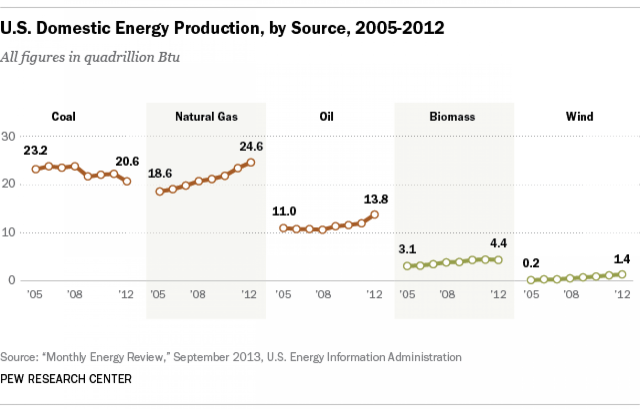Fracking, Or Hydraulic Fracturing, Is Helping US To Produce More Of Its Own Energy [Graphics]

The U.S. is producing 14 percent more of its own energy than it did in 2005 due to the increase in oil and natural gas production, according to data from the Energy Information Agency.
The rapid increase in crude oil and natural gas output can be attributed to the the extraction of the commodities from shale formations.
Thanks to hydraulic fracturing, or fracking, and the ability to drill horizontally, oil and gas production has rocketed. Fracking is a drilling technique that blasts millions of gallons of water and chemicals to fracture rock formations deep beneath the surface and release petroleum. The drilling technique has been heavily criticized, and some environmentalists contend fracking contaminates groundwater.
With current levels of production the U.S. is on track to produce even more energy this year, according to Pew Research Center.

In 2011 natural gas replaced coal as the nations biggest source of domestic energy produced. Domestic crude production increased from 5 million barrels a day to 7.3 million barrels a day. However, as much as the U.S. is trying to stay clear of coal as a source for energy it still accounted for 39 percent of U.S. electricity generation in the first seven months of this year, up 36 percent from the cmoparable period last year, according to EIA’s Electric Power Monthly report.
© Copyright IBTimes 2024. All rights reserved.






















